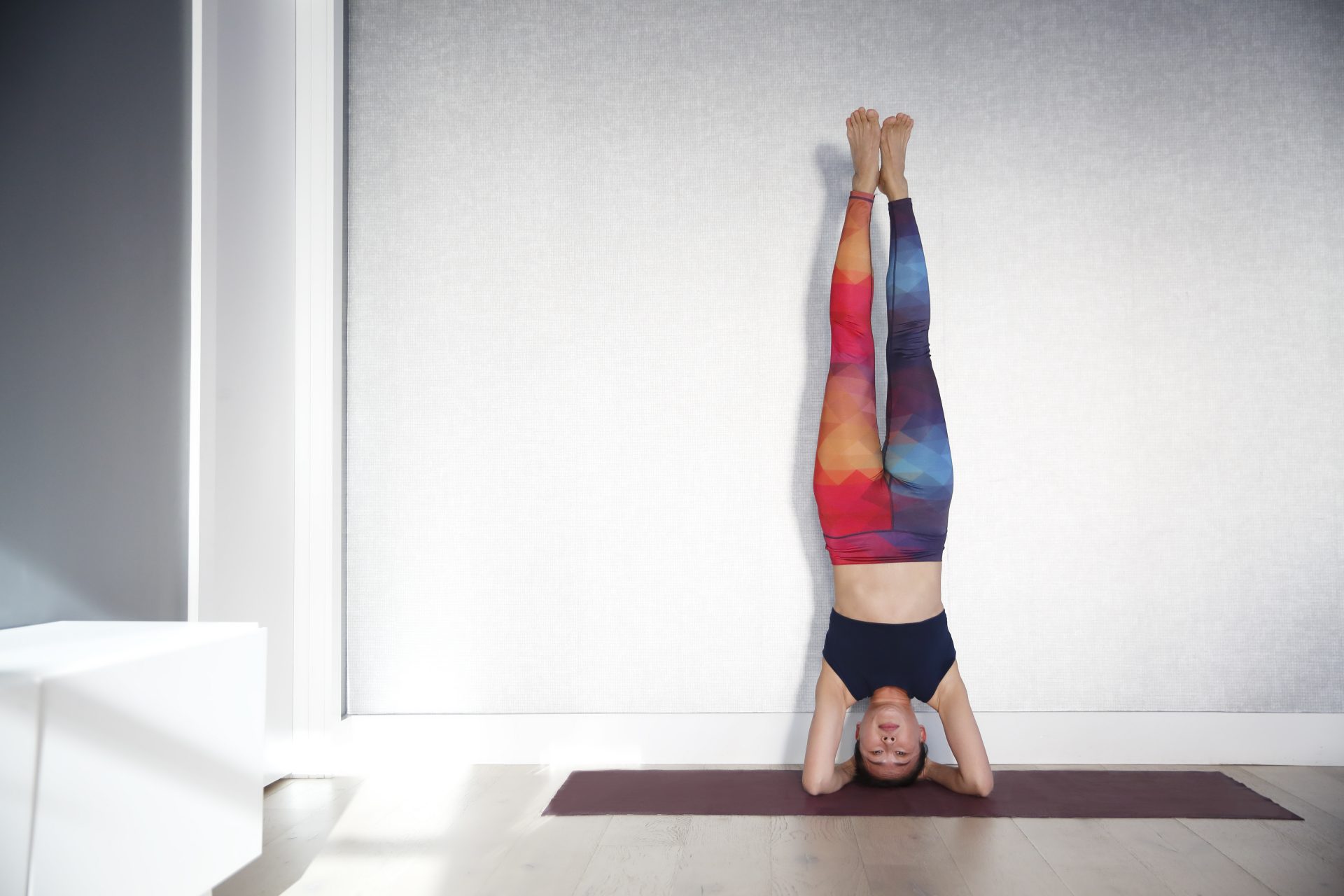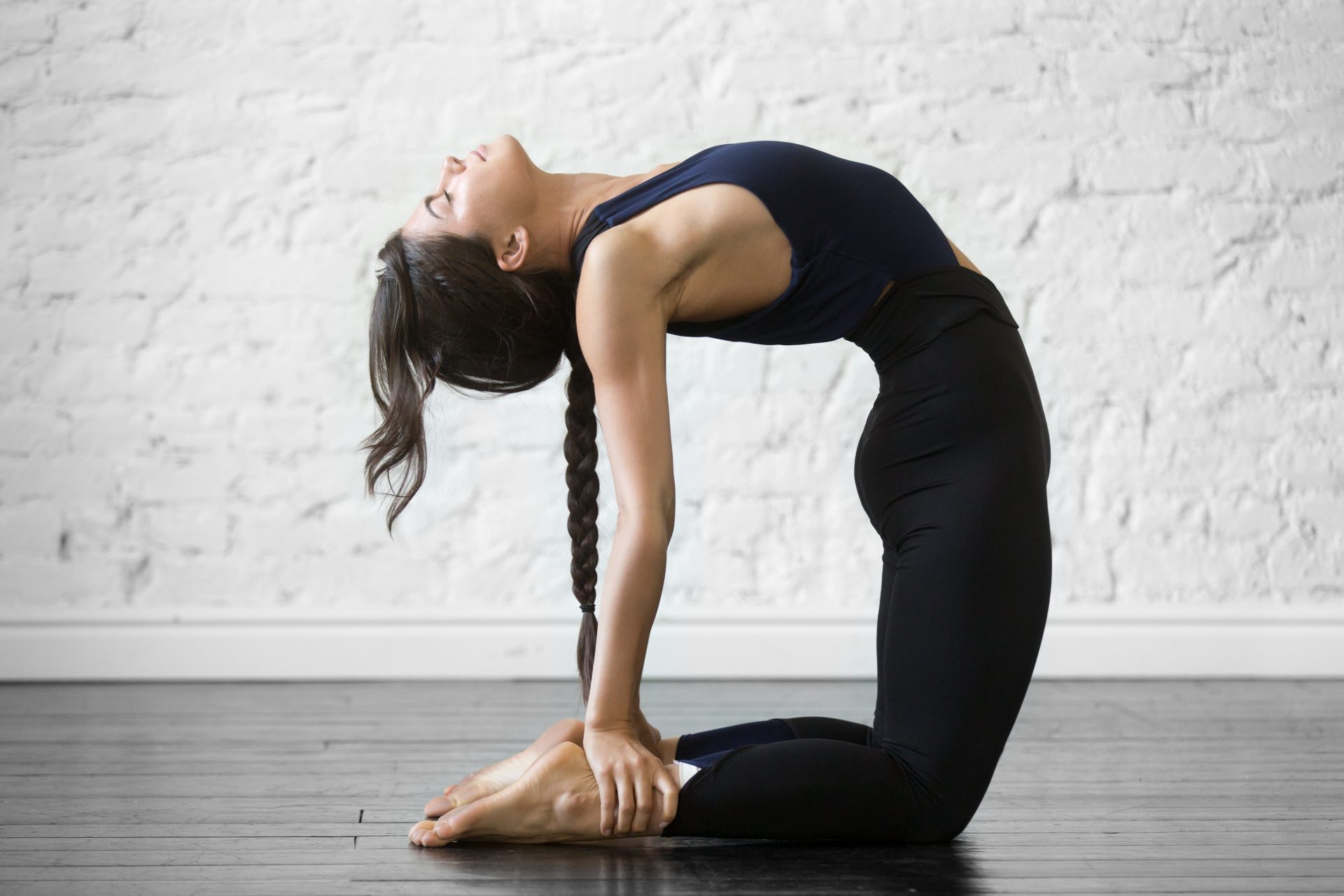Wondering how to fit a little more yoga into your day? The yogis from Lululemon have been explaining which poses best suit certain times of day, and how to ensure that you’re doing them correctly.
To the uninitiated, yoga can look simple. Downward dog and child’s pose seem like a total doss, compared with running a 5k or lifting heavy weights. But yoga is all about precision and many of us are all-too used to rolling through the most common poses without paying attention to key pointers.
Over the past 18 months, yoga has grown massively in popularity. Between 20219 and 2021, Google searches in the UK for “yoga for beginners at home”, for example, grew by 229%. After a couple of years, we might not be total yoga beginners but we could still do with expert input to take our practice to the next level. That’s where Lululemon ambassadors Katarina Rayburn and Darvina Plante come in. They’ve been going through the 10 most common yoga poses, using Instagram data from the past year, to offer their expert tips.
While yoga can be done wherever, whenever, some poses are more suitable in the morning or evening. When we go upside down, for example, we’re supposed to be rejuvenating the body and mind with fresh blood – something that can leave us feeling more refreshed and energised during the day but which might make you feel too ‘buzzy’ before bed.
With that in mind, here are the 10 most common yoga poses from 2021, when best to do them and how to maximise their benefits.
You may also like
Feeling stressed? It’s time to swap vinyasa for pranayama breathwork yoga
1. Headstand
Number of posts online: 2,053, 674
Difficulty: advanced
When to do it: if you’re feeling stressed or overwhelmed, inversions like this can make us feel calmer and more grounded (apparently). You can do it any time of the day but if you do have headstand in your practice, may be save it as a post-Zoom meeting re-set.

Common mistakes: the Lululemon ambassadors say that a common beginner error is trying to jump straight into a headstand. It’s pretty tricky and if you’re struggling, they say one cause maybe that “you’re not engaging your shoulders, or that your elbows are too far apart.”
To start with, use a wall for support and take it slowly.
2. Wheel pose
Number of posts online: 697,542
Difficulty: advanced
When to do it: in the morning. “As it’s energising and uplifting, it’s great to practice when you’ve got low energy or need to wake you up in the morning,” say Rayburn and Plante. They warn, however, that you must be properly warmed up first.
Beginner tip: they recommend checking to see if your hands and feet are too close together. If you’re struggling to get up into wheel, try going into bridge (lifting the glutes off the ground but with your shoulders and arms still on the floor. Having blocks under the hands or feet can help you get up into bridge. You want to make sure that your hamstrings and glutes are fully engaged too.
3. Tree pose
Number of posts online: 649,782
Difficulty: beginner
When to do it: in the morning before work
Common mistake: putting the foot on the knee, which is unsafe. Tree is a balancing pose which sees you standing on one leg with the other leg bent. Either place your foot under or above the knee cap but not on it. Find a spot ahead of you to concentrate on to keep your balance.

4. Camel pose
Number of posts online: 559,831
Difficulty: intermediate
When to do it: first thing in the morning, after a warm-up.
Common mistake: it’s easy to just bend backwards and collapse into the lower back, and that’s how injuries happen. You want to move back slowly and only lean into the pose once fully warmed up. The glutes are vital in protecting the back and stabilising the body so be sure to keep them engaged. If you’re unused to back bends, start slowly and strip the move back – bend slightly from the hips with your hands on your hips to start with and over a series of months, work towards being in the full pose with your hands on your heels.
5. Crow pose
Number of posts online: 549,779
Difficulty: intermediate
When to do it: anytime of day.
Common mistake: people tend to collapse into crow when the key movement is actually pushing away from the floor with your hands. To make it easier, try planking which will help to build strength in your shoulders and wrists.
6. Crane pose
Number of posts online: 508,638
Difficulty: advanced
When to do it: anytime of day
Common mistake: if this move sends shudders through you from memories of failed attempts past, then you’re not alone. Crane is tricky but there are some pointers for finally getting up there. Make sure your hands aren’t too far apart and that your knees are high enough. Engage the core and shoulders fully. You probably need to have a couple of years of yoga under your belt before giving this a go.
7. King pigeon
Number of posts online: 433,329
Difficulty: intermediate
When to do it: just before bed so you can stretch out your legs after a long day.
Common mistake: “People collapse to one side and don’t use support from props when they need to,” says the pair. They warn that if you forgo the block, you risk your form dissolving.

8. Lotus pose
Number of posts online: 355,721
Difficulty: advanced
When to do it: at the end of a practice or workout.
Beginner tip: it looks really simple but if you’ve got tight hips, you’re going to find it hard. In fact, the Lululemon experts say that they recommend having practised yoga for a few years before giving lotus a go, so as to avoid any discomfort in the knee or overly troubling the hips. Be prepared to modify it by resting the feet further towards the knees or lifting one foot at a time.
9. Side plank
Number of posts online: 289,010
Difficulty: intermediate
When to do it: anytime of day.
Common mistake: this is the same move that many of us know (and maybe dread) in strength training. One of the biggest challenges tends to be keeping that bottom hip lifted rather than collapsed, so you need to really concentrate on lifting and pushing that side of the body towards the sky. If it gets too much, go onto your forearm rather than hand, or separate the feet so that you feel more stable on two feet rather than one.
10. Bow pose
Number of posts online: 286,299
Difficulty: intermediate
When to do it: in the morning.
Common mistake: “People tend to bend their elbows when they should be thinking about straightening the arms and activating the legs,” say the experts.
Improve your mobility with one of our quick, 15-minute videos.
Images: Getty
Source: Read Full Article
